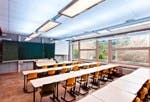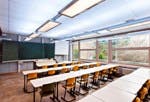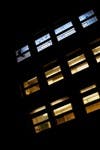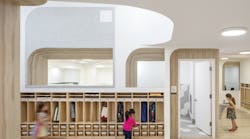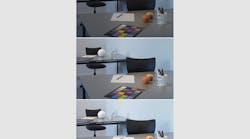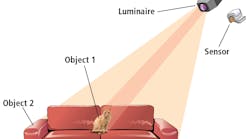The so-called “biologically-optimized” lighting used in the study was produced by combining blue and white LEDs.
The results showed that students working under biologically-optimized classroom lighting achieved better results than the comparison group in standardized tests for concentration ability, and their performance speed also increased.
ZNL and Osram began the field study in November 2011 at the Ferdinand von Steinbeiss School and the Robert Bosch School in Ulm, Germany. In each case, one classroom was fitted with the biologically-optimized light. The students, ranging from 17 to 20 years old, attended classes both in the classroom with the new lighting and also in classrooms with conventional lighting.
During the study, the students had to repeatedly take various standardized performance and concentration tests, such as Brickenkamp's d2 test of attention (see below for details). The test results were compared for biologically effective light in relation to conventional lighting.
LEDs create artificial daylight
The biologically-optimized lighting was implemented using blue and white LEDs. Osram enhanced an LED light developed by its subsidiary company Siteco.
Katrin Hille, head of research at ZNL, who was in charge of the light study, noted the positive effect of the new lighting. "Even though it has been recognized for a long time that light with a specific color temperature and illumination intensity has a positive effect on people's performance and well-being, the fact that the students with the biologically-optimized lighting had up to a third fewer errors in the concentration test is impressive,” she said.
Benefits for students and teachers
According to the researchers, the biologically-optimized light provides stimulation to the body as if the person was outdoors. This causes the students' circadian rhythms to shift forward (in time) so that they are alert earlier in the day. The researchers say this can counteract “social jetlag” i.e. tiredness in the mornings frequently observed in young people in particular.
It is not only the students that appreciate the new light - so do the teachers. “Many teachers, even those that were skeptical about the new lighting at the beginning, told me at the end of the study that they are also now feeling better,” said ZNL researcher Oliver Keis, who also worked on the study.
Brickenkamp's d2 test of attention
The d2 test is a standardized, more developed version of the cross-out test. It measures the speed and accuracy of a person's working behavior when differentiating between similar visual stimuli (detail discrimination), so it allows evaluation of their individual performance with regard to attention and concentration.
